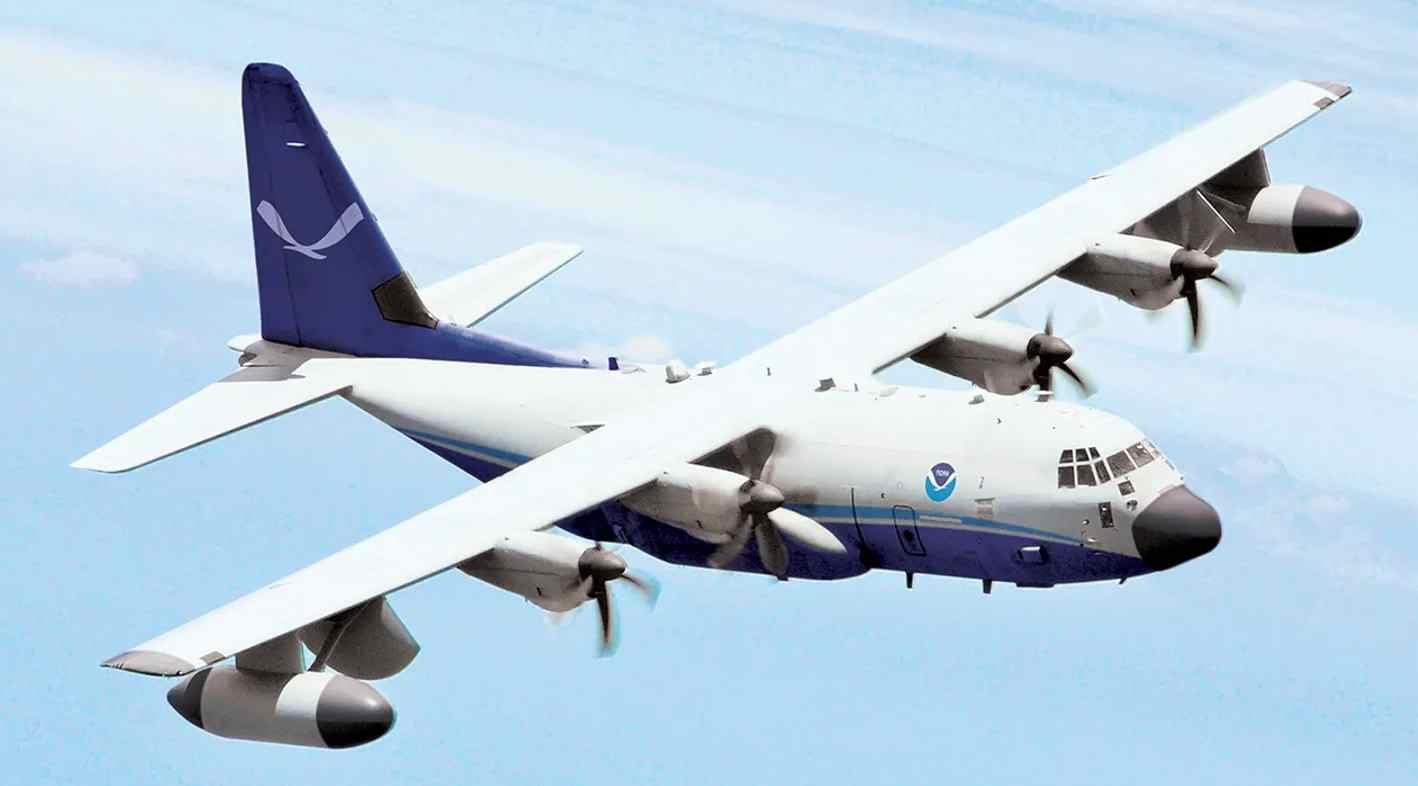Highlights
- NOAA Hurricane Hunters collect storm data with advanced aircraft.
- They fly two Lockheed WP-3D Orion planes nicknamed “Kermit” and “Miss Piggy.”
- Gulfstream IV-SP jet “Gonzo” gathers high-altitude data during storms.
- New C-130J Hercules planes will replace older aircraft by 2030.
- NOAA will receive upgraded Gulfstream G550 jets by 2025.
- These missions provide crucial data for predicting storm paths and intensities.
NOAA’s Hurricane Hunters are flying through Hurricane Milton, a Category 5 storm, using specialized planes like Lockheed WP-3D Orion and Gulfstream IV-SP.
These planes collect crucial data for weather forecasters, helping predict the storm’s path and intensity.
The Hurricane Hunters rely on three key aircraft for gathering this data—two WP-3D Orion planes, affectionately known as “Kermit” and “Miss Piggy,” and a Gulfstream IV-SP jet called “Gonzo.”
These planes are equipped with cutting-edge technology that allows scientists to fly through, above, and around dangerous storms like Hurricane Milton to study its behavior.
The two Lockheed WP-3D Orion planes, known for their ability to fly up to 27,000 feet, are packed with tools such as Doppler radar systems and GPS dropwindsondes, which are dropped into the storm to measure wind speed, pressure, and other atmospheric data.
These planes provide an “MRI-like” view of hurricanes, helping forecasters understand how the storm is evolving.
In one recent flight, the WP-3D “Miss Piggy” experienced some turbulence while flying through Hurricane Milton, but its passengers remained unfazed.
These missions are essential for hurricane forecasting, as the data collected directly impacts the models used by the National Hurricane Center (NHC).
Alongside the WP-3D planes, NOAA’s Gulfstream IV-SP jet, “Gonzo,” plays a crucial role in collecting high-altitude data.
The jet flies at heights of up to 45,000 feet and drops GPS windsondes into the storm from above.
This helps scientists map the currents that guide a hurricane’s movements, giving them insights into where it might head next.
Over the past few days, “Gonzo” has made several flights over Hurricane Milton, gathering essential information for meteorologists.
In addition to NOAA’s efforts, the Air Force Reserve also sends its Hurricane Hunters into the storm.
Their fleet includes 10 WC-130J Hercules planes, which also collect vital data for the NHC, contributing to a clearer picture of how Hurricane Milton is progressing.
NOAA has plans to expand its Hurricane Hunter fleet. Recently, the agency signed a contract with Lockheed Martin for two new C-130J Hercules planes, which will replace “Kermit” and “Miss Piggy” by 2030.
These next-generation aircraft will feature more advanced tools and more space for scientific equipment, allowing for even better data collection.
By 2025, NOAA also expects to retire the Gulfstream IV-SP, replacing it with two new Gulfstream G550 jets.
These planes will further enhance NOAA’s ability to forecast hurricanes with greater accuracy, benefiting both research and public safety.
NOAA’s Hurricane Hunters, along with their aircraft, are crucial in understanding and predicting deadly storms like Hurricane Milton.
The information they collect helps forecasters make life-saving decisions.
